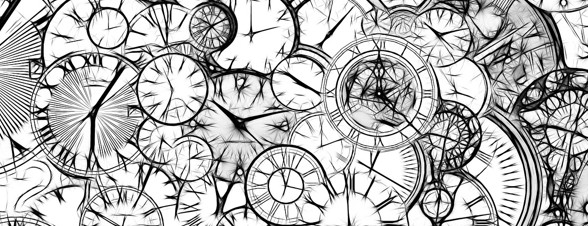Caught Between Clocks – Do You Know Your Chronotype?
Are you aware that we don’t all exist in the same timeframe? Your internal clock is not my internal clock. The natural timing you gravitate toward is called your chronotype.
Chronotype – What?
Basically, your chronotype is your preferred schedule for sleep and wakefulness. You might be an early bird (get those worms!), you might be a night owl, or you might be somewhere in between.
A mix of genetics, light exposure, behavior, and other factors can determine chronotypes. The classic 2003 paper Life Between Clocks tells us that internal rhythms can differ wildly and affect everything from alertness to metabolism.
In practice, chronotypes aren’t rigid. Although they can shift over time, the core tendencies often remain the same. What’s more, mismatches between your internal clock and your daily demands can lead to social jetlag, which is – among other things – a real drag.
How Your Chronotype Affects Your Daily Life
Chronotype isn’t only about when you wake up. It can affect the rest of your day…and how effectively you spend it. Consider:
● Peak energy windows – If you’re a “morning type,” your brain may hum between 7–10 a.m. | If you’re an evening type, your sharpest moments might arrive later.
● Eating, exercise, and routines – Tailoring your workouts and meals to your energy peaks can boost both consistency and enjoyment.
● Health outcomes – Some early research finds that morning chronotypes tend to have more favorable metabolic markers like lower BMI or healthier blood sugar profiles.
● Mental health and mood – There’s growing evidence that misalignment between sleep preference and life demands might contribute to stress, mood shifts, or even psychiatric risk.
Through the Lens of Your Chronotype
1. Discover your chronotype
Questionnaires such as the Morningness–Eveningness Questionnaire (MEQ), or the Munich Chronotype Questionnaire (MCTQ) can help you determine where you are on the sleep scale.
2. Be strategic about light exposure
For night owls, morning light can anchor your rhythm earlier. For early birds, light in the evening can push things gently later. Use blackout shades, dim screens, and time your sunlight exposure.
3. Align tasks with energy peaks
Match demanding work, creative thinking, or workouts with your peak energy times. Leave routine or less taxing tasks for your off-peak windows.
4. Watch out for the “I’ll Sleep Later” Syndrome
Many of us try to catch up on their sleep over the weekend, pushing bedtime later; this creates social jetlag. Keeping weekends within a 1–2 hour window of your weekday schedule helps reduce strain.
5. Take small steps
You can’t change your chronotype overnight. Incremental tweaks (15–30 minutes) are kinder to your system and easier to sustain.
It’s a world that so often praises “grind” culture — get up early! Work all day! Work all night! Get the job done-done-done and fast-fast-fast! So, being aware of your chronotype grants permission to rest, wake, and create in harmony on your terms, not someone else’s schedule.
Whether you’re a wolf, a lion, or a bear, discover and embrace your unique rhythms. Use them as guideposts, not limits. Shifting our lens from forcing ourselves to listening to ourselves is where meaningfulself care begins.
Think of it as your personal wake-up call…
Further Reading & Resources:
● UCLA’s deep dive into chronotypes and how your “early bird vs. night owl” wiring matters
● SleepFoundation’s guide on how chronotypes work
● Montaruli et al., Biological Rhythm and Chronotype: New Perspectives (PMC)● Roenneberg’s Life Between Clocks (2003) foundational paper


